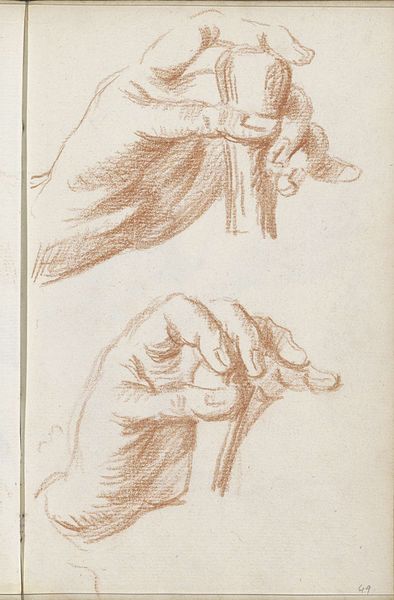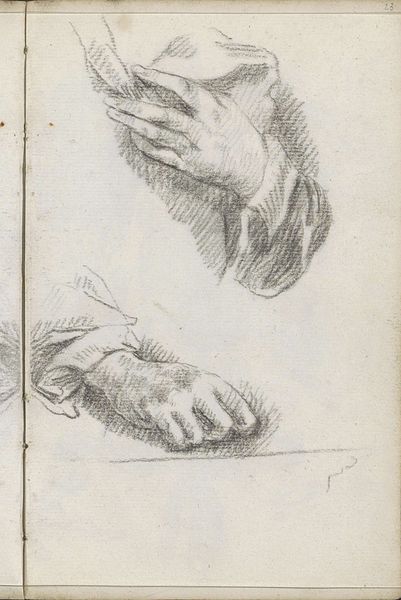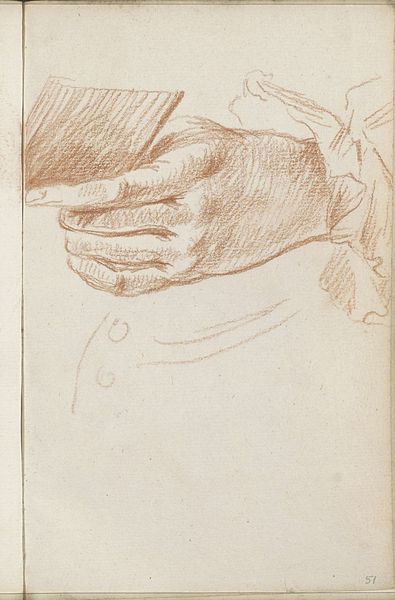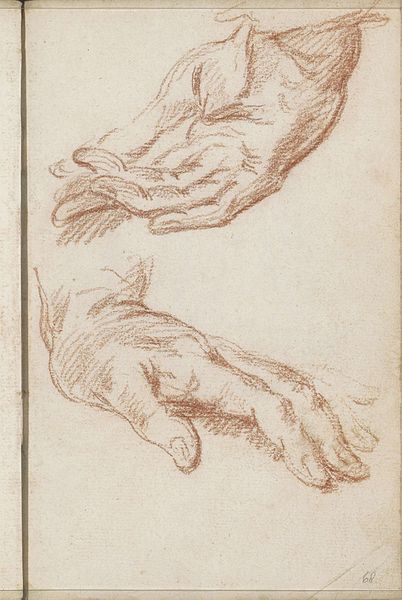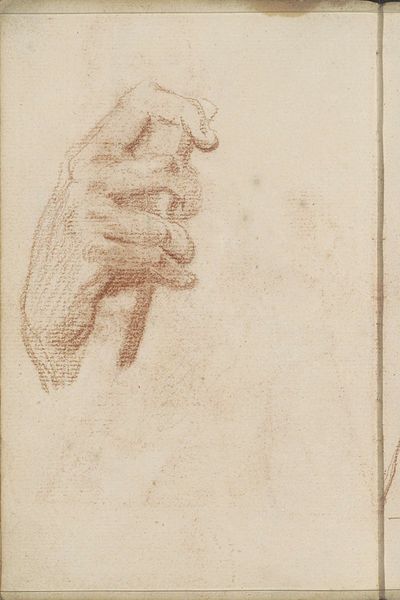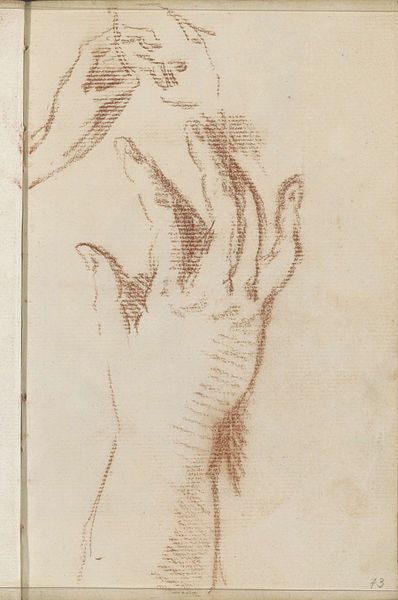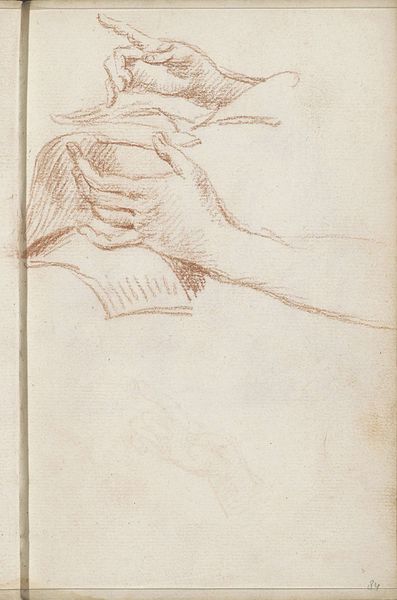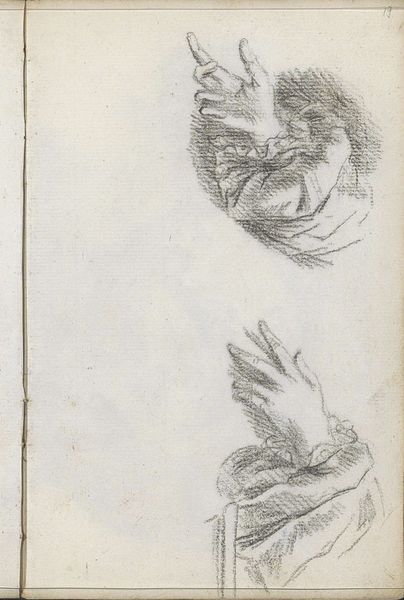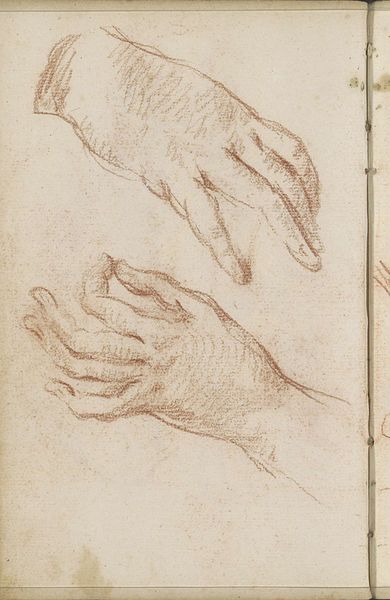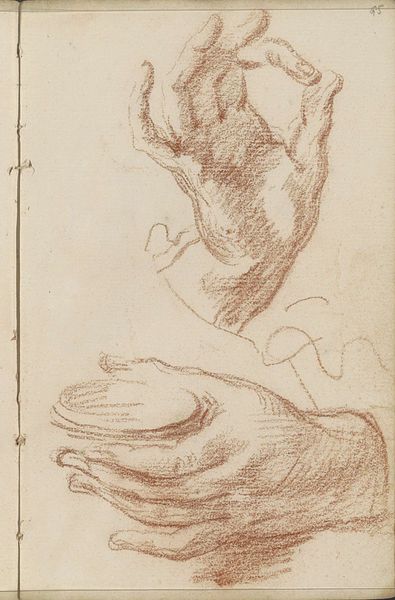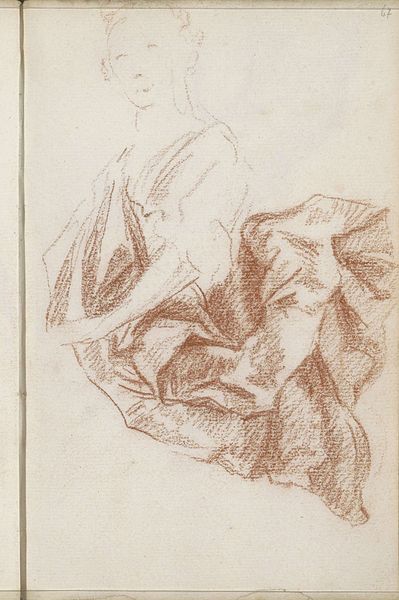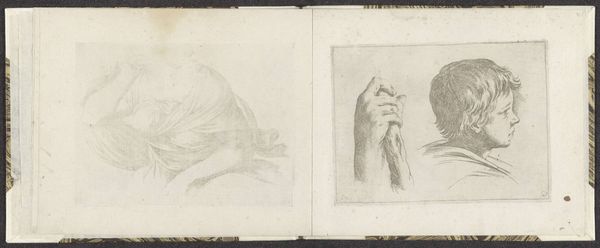
drawing, pencil
#
portrait
#
drawing
#
baroque
#
pencil sketch
#
figuration
#
pencil
Copyright: Rijks Museum: Open Domain
Editor: Here we have "Handen die de knop van een (wandel)stok vasthouden," or "Hands Holding the Knob of a (Walking) Stick" by Petrus Johannes van Reysschoot, dating sometime between 1710 and 1772. It's a red chalk drawing with two studies of hands. There's something incredibly vulnerable and also dignified about the rendering. What stands out to you when you look at this work? Curator: What immediately strikes me is the context of dependency and perhaps disability this image evokes. Consider the period: 18th-century society, marked by strict hierarchies and limited opportunities for those deemed "infirm." This drawing, focusing on hands gripping a walking stick, speaks volumes about societal attitudes towards aging, illness, and mobility. It invites us to think about the power dynamics embedded in representation. How does the artist choose to portray dependence, and what social narratives are reinforced or challenged in this choice? Editor: That's a really interesting way to look at it! I hadn’t really thought about the power dynamics at play, just focusing on the hands as studies themselves. Are you suggesting this artwork, whether intentionally or not, enters a broader conversation about accessibility and societal expectations? Curator: Absolutely. Art doesn't exist in a vacuum. The prevalence of walking sticks among the wealthy was tied to social rituals of display and emphasized their limited roles. But, let's also consider other populations: the disabled, the poor. Did their use of walking sticks hold different meanings, or did it result in new forms of prejudice? By visualizing and immortalizing it, is van Reysschoot legitimizing the use of assistive technology, even highlighting those in need? Editor: Wow. I originally saw this drawing as just a study in form, but thinking about the societal context really transforms how I view it. It becomes more charged, political, even. Thanks so much! Curator: My pleasure. It’s precisely those intersectional perspectives that unlock deeper meanings. It teaches us that seeing isn't always believing. Questioning the story allows for different voices.
Comments
No comments
Be the first to comment and join the conversation on the ultimate creative platform.
